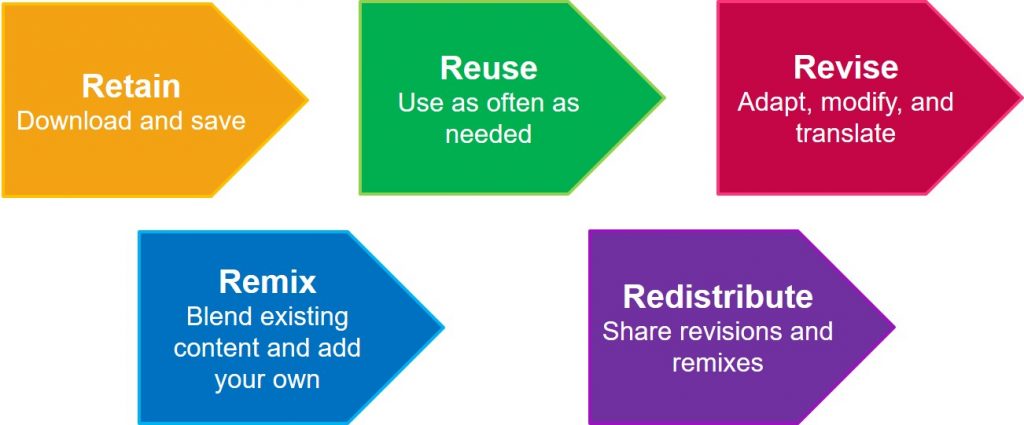The How and Why of OER
What are Open Educational Resources?[1]
OER = Free + 5 Rs
OER are teaching, learning and research materials that are released with an open-copyright license, or are in the public domain and have no copyright. They range from textbooks to entire courses and everything in between, including videos, podcasts, tests and exercises, websites, software, simulations, case studies, presentation slides, and more. The key is that they can be widely distributed and adapted because they are at no cost to the user and are not subject to the usual copyright restrictions. This openness is most often indicated by a Creative Commons licence.
What can be done with OER? The 5 Rs

Benefits of OER
- OER are freely-accessible (or low-cost if printed), reducing or eliminating the course materials cost for students and improving access to educational resources needed for success in courses.
- They can be customized and adapted to a learning context and/or combined with other content and interactive or multimedia elements to provide richer teaching and learning opportunities.
- They offer continued access since most OER are digital, do not require an access code and do not expire.
- They contribute to students’ success and completion by easing their financial burden without having a negative impact on their learning.[2]
- OER can be an opportunity to co-create knowledge with students in the form of sustainable/renewable assignments rather than limiting their role to that of consumers of information.
The adaptation of existing OER and the creation of new resources are also opportunities to make course materials more accessible, inclusive, and representative for learners. This kind of equity and flexibility seldom exists in traditional textbooks. Because OER are not created to satisfy a commercial market, they can address topics and include perspectives that may otherwise be neglected.

